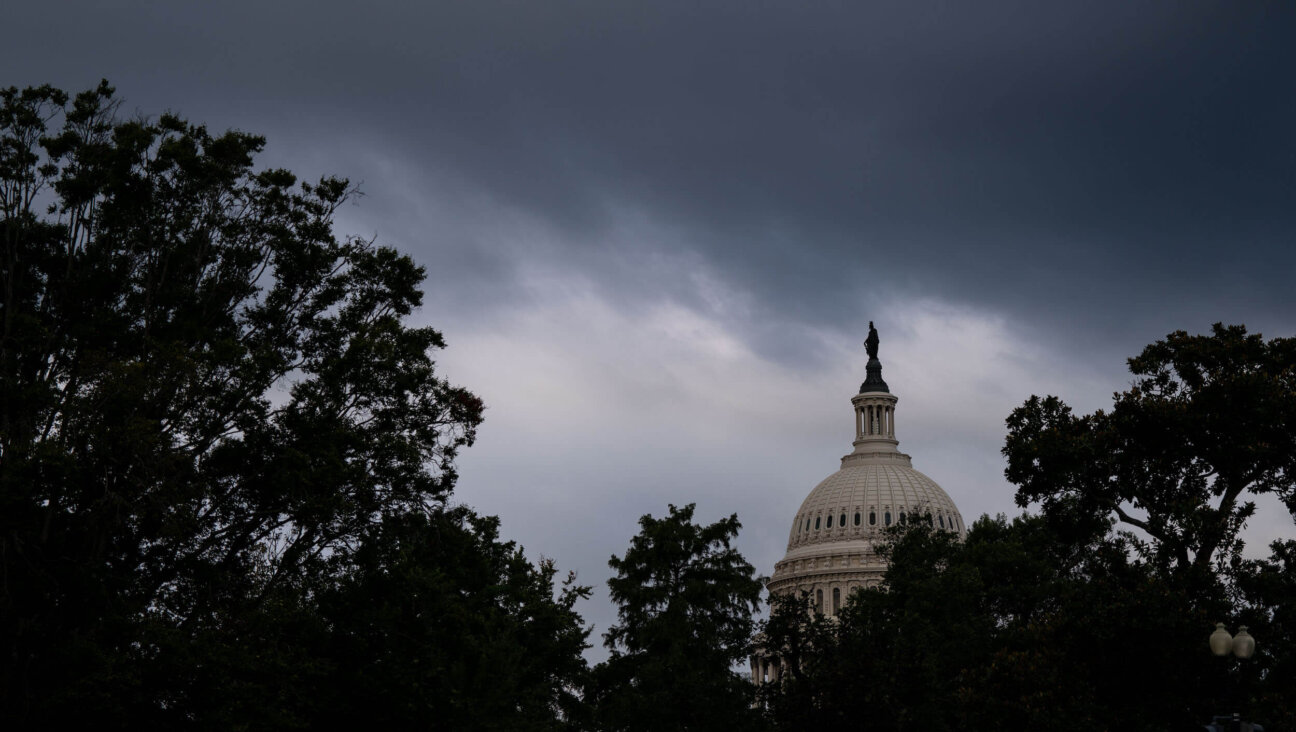Diving Into the Gene Pool: New Research on the Origins of the Tribe
The genetics blog at DiscoverMagazine.com, Gene Expression, has an eye-opening post peeling away some of the more intriguing layers in the big new study of Jewish genetic patterns that was published June 3 in the American Journal of Human Genetics and reported the next day in the Forward’s own Shmooze blog.
The Journal study confirms something that Jews have been saying for centuries, both to themselves and to an increasingly skeptical world: “Jews across the world by and large share unexpected genetic affinity which one would not predict from geography, but only from their common religious-ethnic identity as Jews.“
More specifically, Jews are defined in large part by a “shared Middle Eastern ancestry.” The genes show that they aren’t Poles or Moroccans or Khazars who stumbled across Second Avenue pastrami and stayed for dessert. They come from a single tribe. That fact alone raises a knotty question, as our Forward editorial asked: What will happen to the age-old Jewish sense of “tribal connection, of peoplehood,” as the Jews’ “similar genetic structure” meets the “free-for-all that is America?”
Well, the Discover blogger, Razib Khan, dug into the data in the journal study (jauntily titled “Abraham’s Children in the Genome Era: Major Jewish Diaspora Populations Comprise Distinct Genetic Clusters with Shared Middle Eastern Ancestry”) and found some unexpected nuggets that should shake up our views on that and a lot of other questions. For one thing, Khan reminds us that stirring up the gene pool with neighboring stock is nothing new in Jewish life. For another thing, the famously self-protective Syrian Jews of Brooklyn may be shocked to discover that they are more closely related to the Ashkenazic Jews of Poland and the Upper West Side — the Oshkies, as they’re spoken of on Ocean Parkway — than they are to their former Sephardic Jewish neighbors in Iraq and Iran.
It is notable that the distinction in terms of genetic distances maps onto that between the Roman and Persian Empires, where two Jewish communities emerged with different loci, Mesopotamia and the Palestine-Alexandria axis, respectively. Syrian Jews, who were within the boundaries of the Roman Empire, are more similar to European Jews than Iraqi Jews to their east…
During Greco-Roman times, recorded mass conversions led to 6 million people practicing Judaism in Roman times or up to 10% of the population of the Roman Empire. Thus, the genetic proximity of these European/Syrian Jewish populations, including Ashkenazi Jews, to each other and to French, Northern Italian, and Sardinian populations favors the idea of non-Semitic Mediterranean ancestry in the formation of the European/ Syrian Jewish groups and is incompatible with theories that Ashkenazi Jews are for the most part the direct lineal descendants of converted Khazars or Slavs.
To make it clearer, the Jews of Iraq and Iran are generally the descendants of the Jews who were exiled to Babylonia after the destruction of the First Temple in 586 BCE. We often forget that only a smallish group returned to Jerusalem a half-century later to build the Second Temple and restore the kingdom under what became Greek and then Roman suzerainty. Those returnees are the ancestors of the Jews who turn up in the new study as Ashkenazi, Syrian, Italian, Greek and Turkish Jews.
Also, there’s a strong Italian influence in the gene patterns of Ashkenazim, who migrated over the Alps to the Rhine Valley and then east to Poland. But the further north you look, the less genetic affinity you find between the local populations and the Ashkenazim who settled among them.
Roughly, Jewish genetic relatedness to European groups tracks how strongly influenced by Rome a region was. Jews are closest to Italians, least close to Finns and Russians.
This latter fact would be immediately familiar to anyone who grew up in New Jersey, South Brooklyn or anywhere near my own Long Island hometown, Massapequa, which we locals often called Matzo-pizza.
Khan is a West Coast software wonk with a background in microbiology. He’s both a fellow at the right-wing Unz Foundation and a regular contributor to the left-wing British Guardian. He writes in a pretty clear, if rather dry manner. Some of his evidence is based on the Y-chromosome technique that’s been used, for example, to trace priestly Cohen genes in various odd places, including the Lemba of southern Africa. He also dives into some more advanced stuff that had me completely lost, with names like Fst, PCA, SNP, HGDP and phylogenetic tree analysis. But you can tune that stuff out and still follow his main arguments. His post is well worth a read.
Some of Khan’s most interesting stuff turns up in his color-coded diagrams, which show clusters of gene groups by affinity. One chart shows Syrian Jews as a cluster of dots at the center, with Turkish and Greek Jews branching out to the left and Ashkenazim just beyond them. On the right, separated by some distance, are the Iraqi-Iranian Jews. And branching out just below the Syrian cluster, hugging close to the Turkish-Greek and Ashkenazic clusters, are two non-Jewish groups that are our closest cousins: Druze and Bedouins. Just below them, about the same distance away as the Iraqi Jews, are the Palestinians. Yes, those Palestinians. When Israelis speak of them colloquially as the b’nei dodim, the “cousins,” they’re not kidding.
The bottom line: Jews aren’t strangers who stumbled into the Holy Land. And neither are the Palestinians.
A message from our CEO & publisher Rachel Fishman Feddersen

I hope you appreciated this article. Before you go, I’d like to ask you to please support the Forward’s award-winning, nonprofit journalism during this critical time.
We’ve set a goal to raise $260,000 by December 31. That’s an ambitious goal, but one that will give us the resources we need to invest in the high quality news, opinion, analysis and cultural coverage that isn’t available anywhere else.
If you feel inspired to make an impact, now is the time to give something back. Join us as a member at your most generous level.
— Rachel Fishman Feddersen, Publisher and CEO























